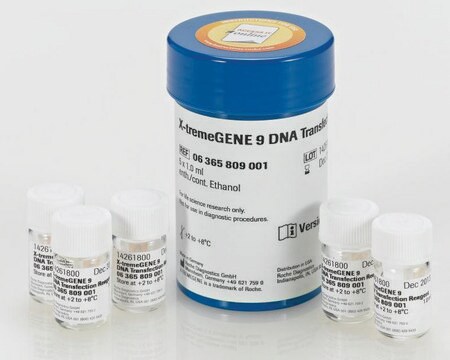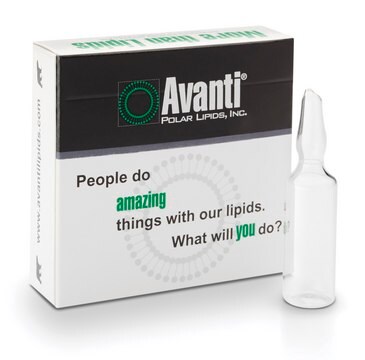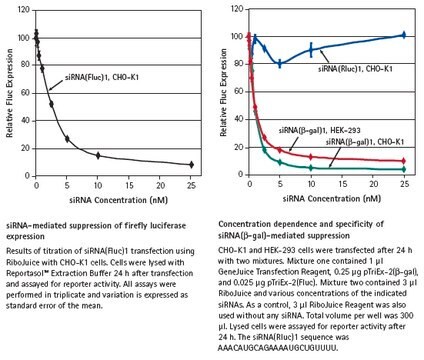L3287
Escort™ IV Transfection Reagent
Lipid reagent for transient and stable transfection of mammalian and insect cells.
Sinonimo/i:
Gene delivery
About This Item
Prodotti consigliati
Grado
for molecular biology
Livello qualitativo
Stato
liquid (aqueous solution)
impiego
mL sufficient for 160-500 transfections
Concentrazione
1 mg/mL
tecniche
transfection: suitable
Temperatura di conservazione
2-8°C
Categorie correlate
Descrizione generale
Applicazioni
Caratteristiche e vantaggi
- Suitable for stable and transient transfection
- Optimized for a wide variety of cell lines
- Low toxicity
- Compatible with both serum and serum-free transfection protocols
- Ideal for Sf9, Sf21 and S2 insect cells
Componenti
1 mg/mL total lipid in water
Note the identity of the lipids used in Escort™ IV is confidential.
Avvertenza
Principio
Note legali
Prodotti correlati
Codice della classe di stoccaggio
10 - Combustible liquids
Classe di pericolosità dell'acqua (WGK)
WGK 3
Punto d’infiammabilità (°F)
Not applicable
Punto d’infiammabilità (°C)
Not applicable
Dispositivi di protezione individuale
Eyeshields, Gloves
Scegli una delle versioni più recenti:
Possiedi già questo prodotto?
I documenti relativi ai prodotti acquistati recentemente sono disponibili nell’Archivio dei documenti.
I clienti hanno visto anche
Articoli
Transfection is the introduction of DNA, RNA, or proteins into eukaryotic cells and is used in research to study and modulate gene expression. Thus, transfection techniques and protocols serve as an analytical tool that facilitates the characterization of genetic functions, protein synthesis, cell growth and development.
This brief webinar provides an overview of what transfection is and the methods that are used to introduce DNA or RNA into eukaryotic cells.
Protocolli
Lipid Transfection Optimization Protocol
Sigma's Universal Transfection Reagent is a unique formulation of a proprietary polymer blend used for transient and stable transfection of nucleic acids into various eukaryotic cell lines and hard-to-transfect primary cells. Fast and easy protocol is compatible with serum, serum-free medium and antibiotics
Escort™ IV Transfection Reagent Protocol
Escort™ III Transfection Reagent Protocol
Il team dei nostri ricercatori vanta grande esperienza in tutte le aree della ricerca quali Life Science, scienza dei materiali, sintesi chimica, cromatografia, discipline analitiche, ecc..
Contatta l'Assistenza Tecnica.











